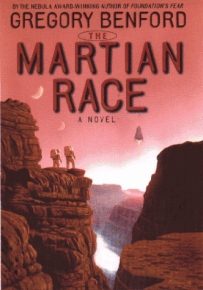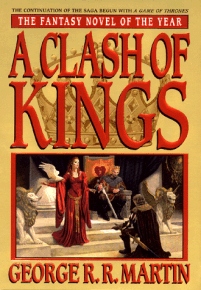

PARADOXby Stephen YoullPaper Tiger1-85585-916-5128pp/£20.00/2001 |
|
Reviewed by Steven H Silver
In 2001, Stephen Youll was the artist guest of honor at the worldcon held in Philadelphia. The work for which he was being honored has appeared on numerous book and magazine covers. However, while the cover art of a book is designed to catch the eye of browsers, it is questionable how many readers will buy a book specifically because they like the cover art. Collections such as Paradox allow Youll's fans to collect the artwork which may have graced books both in their collection and books they had no interest in obtaining beyond the cover art. Furthermore, the artwork in Paradox lacks the typographic features placed by well-meaning marketing departments to allow the reader to know the title and author of the work the art appears on. The oversized glossy pages of Paradox allow the viewer to see details which may not be readily visible on the smaller covers of the books the artwork was originally commissioned to illustrate. Youll also provides bibliographic information so the reader will know which books these covers originally graced. This information also lets the reader know the composition and size of the original work. Comparing the reproductions which appear in Paradox with the reproductions which appear on the original covers demonstrates the attention to detail which Youll provides which may be lost when the image is shrunk or placed on a cover (and which the images on this page do even less justice to).



The diversity of Youll's work is well represented, from the photorealistic images which graced the covers of a trilogy of "Star Wars" anthologies Youll provided to the landscape of Gregory Benford's The Martian Race to the more cartoonish qualities of his covers for "Batman" and "Superman" novels. Youll has divided his artwork into categories for the purposes of this book, and has written a (too) short introduction to each section. These brief passages give the reader some insight into You'll personality, techniques and interests. However, since they introduce sections of related pictures, they don't give Youll the opportunity to discuss any of the specific works in detail. The closest he comes to taking a work from beginning to end is an image entitled "Wom Planet" (pp70-71), which was commissioned by IBM. At the end of the book, Youll provides a series of preliminary sketches for several of his works. For "Wom Planet," however, he has no fewer than twelve intermediary sketches which show how the final work was conceived and produced.


Too often, the artwork on a book is relegated to the dustbin. Once the cover has captured the attention of the reader, its main function is completed. However, art for art's sake is also important. Paradox collects the work of Stephen Youll, allowing people to discover or rediscover it on its own without the marketing preconceptions which are attached to it as soon as the publisher places it on a novel.
 (Hardcover)
(Hardcover) .
.
| Return to |